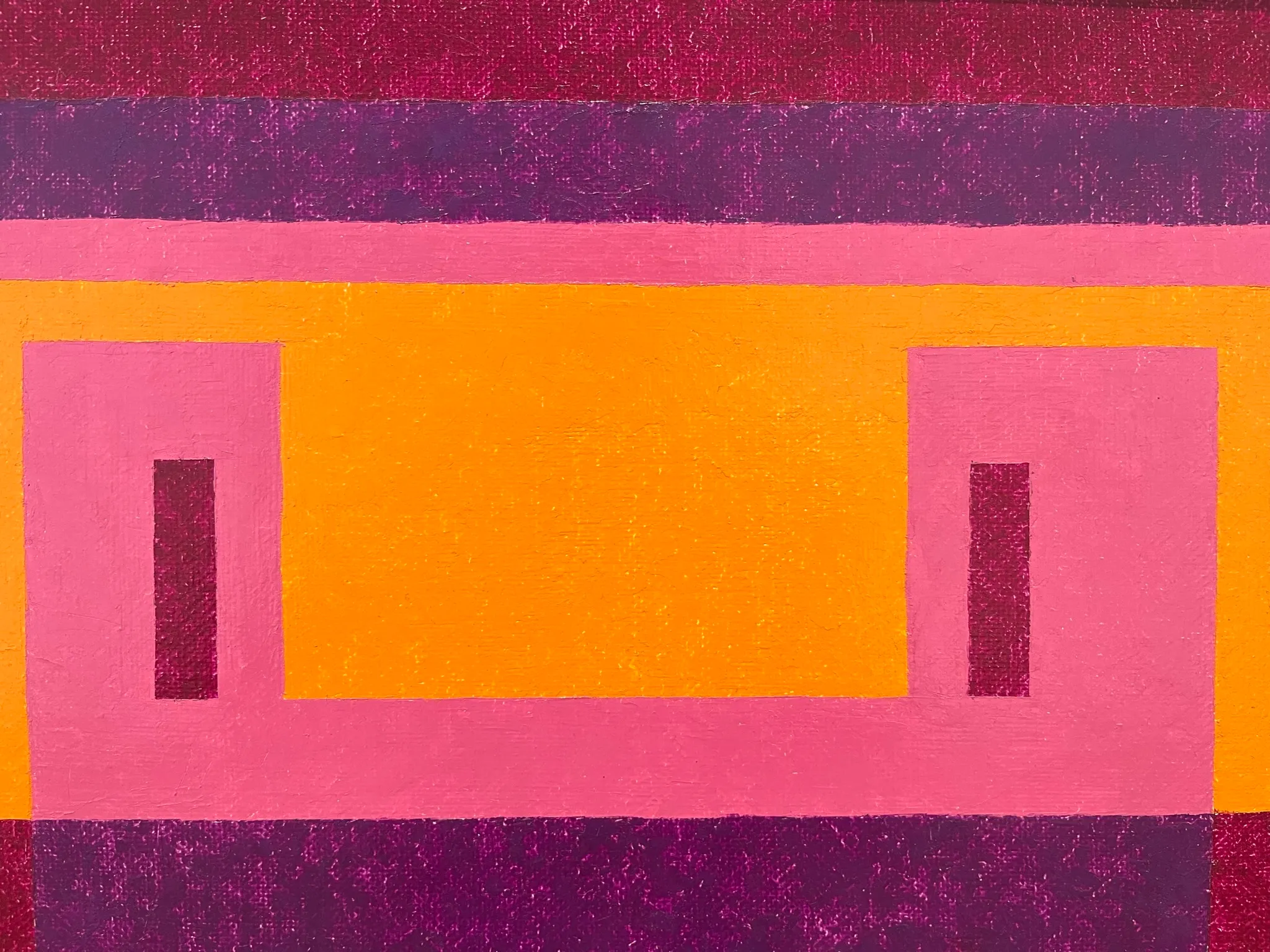
Josef Albers
1963
In 1963, Albers published Interaction of Color, which is a record of an experiential way of studying and teaching color. He asserted that color “is almost never seen as it really is” and that “color deceives continually”, and he suggested that color is best studied via experience, underpinned by experimentation and observation. The very rare first edition has a limited printing of only 2,000 copies and contained 150 silk screen plates.

Color model representing Albers’ color theory as described in Interaction of Color (1963)
Albers presented color systems at the end of his courses (and at the end of ‘Interaction of Color’) and these featured descriptions of primary, secondary and tertiary color, as well as a range of connotations that he assigned to specific colors on his triangular color model.
In respect to his artworks, Albers was known to meticulously list the specific manufacturer’s colors and varnishes he used on the back of his works, as if the colors were cataloged components of an optical experiment.
His work represents a transition between traditional European art and the new American art. It incorporated European influences from the Constructivists and the Bauhaus movement, and its intensity and smallness of scale were typically European, but his influence fell heavily on American artists of the late 1950s and the 1960s. “Hard-edge” abstract painters drew on his use of patterns and intense colors, while Op artists and conceptual artists further explored his interest in perception.
In an article about the artist, published in 1950, Elaine de Kooning concluded that however impersonal his paintings might at first appear, not one of them “could have been painted by any one but Josef Albers himself.”.


You must be logged in to post a comment.